The Cartier Tank Watch: A Timeless Masterpiece of Elegance and Innovation
The Cartier Tank watch is a true icon in the world of horology, celebrated for its timeless design and unparalleled elegance. Since its inception over a century ago, the collection has caught the attention of watch enthusiasts and collectors alike, becoming a symbol of refinement and innovation. As a respected purveyor of luxury timepieces, Bob's Watches is proud to offer a curated selection of Cartier Tank watches, each with its own unique story and place in history. Join us as we explore the fascinating journey of the Cartier Tank, from its origins during World War I to its enduring legacy as a true masterpiece of watchmaking.
The Birth of the Cartier Tank During World War I
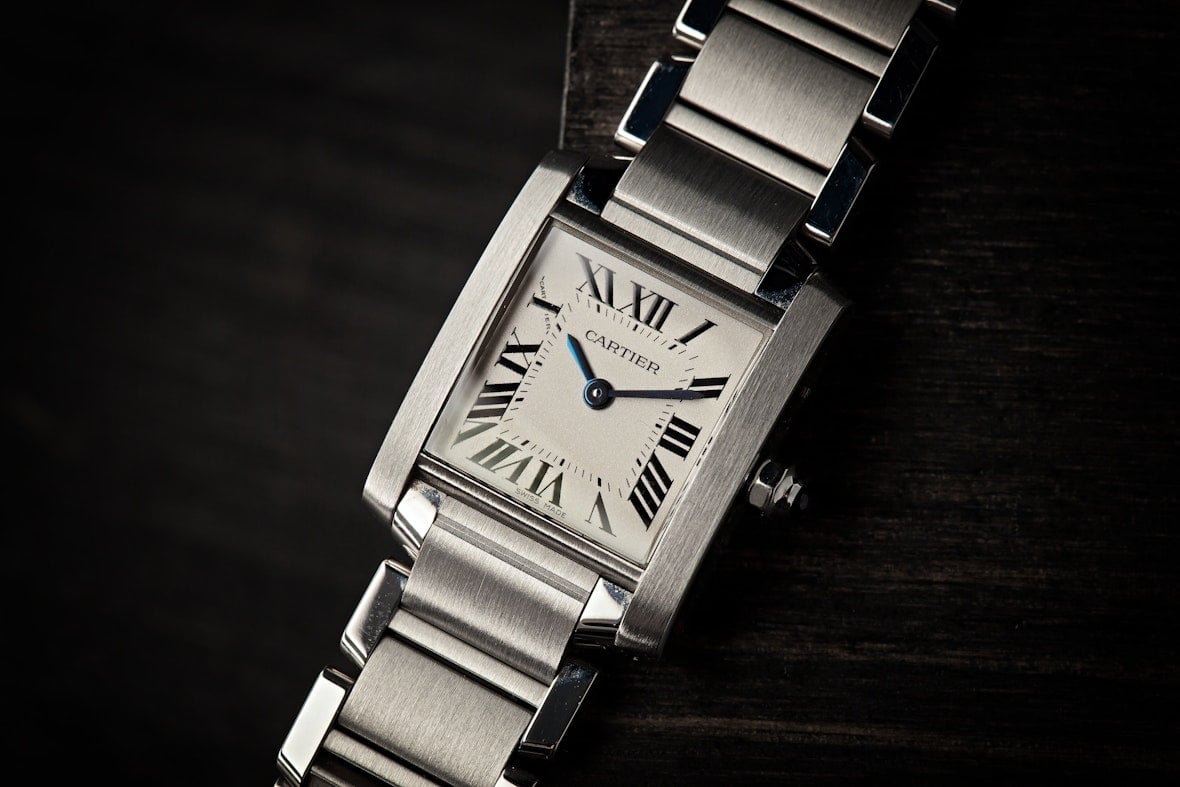
The story of the Cartier Tank watch begins in the midst of World War I, when Louis Cartier, the visionary behind the brand, found inspiration in an unlikely source: the Renault tanks used on the Western Front. Cartier was struck by the unique design of these armored vehicles, with their sleek lines and rectangular shape. He set out to create a watch that would embody the spirit of modernity and innovation, making the Cartier Tank a must-have timepiece for collectors. It stood out from the more traditional round watches of the era, establishing its own unique identity.
In 1917, the brand unveiled the first Tank prototype, a watch that would revolutionize the world of horology. The prototype featured a rectangular case, a departure from the round watches that dominated the market at the time. The case was flanked by distinctive "brancards," or vertical bars, which were inspired by the treads of the Renault tanks. This unique design element would become a defining characteristic of the model.
The design was not only aesthetically groundbreaking but also functionally innovative. The company designed the watch to be worn on the wrist, a relatively new concept at the time when pocket watches were still the norm. The elongated case allowed for a larger dial, improving legibility and making it more practical for everyday wear. The watch also featured Cartier's signature Roman numeral dial, a blue cabochon crown, and a leather strap, all of which would become hallmarks of the Cartier Tank collection.
From its very first prototype, the line established itself as a watch that seamlessly blended form and function, elegance and innovation. The Cartier Tank's unique design, characterized by its rectangular case, vertical brancards, Roman numeral dial, and blue cabochon crown, would go on to influence generations of watchmakers and define the aesthetic of the modern dress watch. As we delve deeper into the history of the Cartier Tank, we'll explore how this iconic timepiece evolved over the decades, cementing its status as a true legend in the world of haute horlogerie.
The Early Years of the Cartier Tank
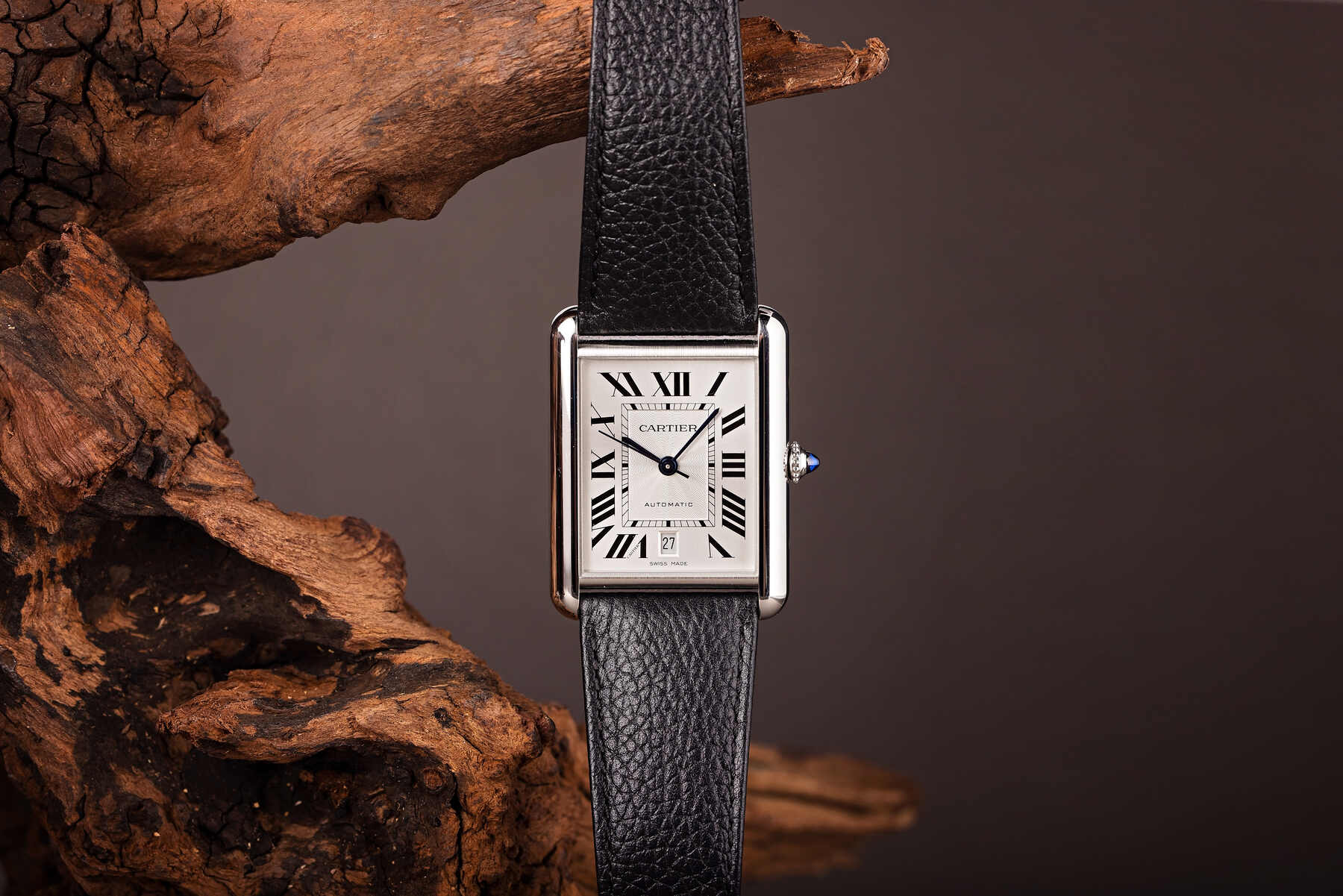
The early years saw the introduction of several iconic models that would shape the collection's legacy and set the standard for the dress watches of the era. From the Tank Normale to the Tank Cintrée, these early models showcased Cartier's commitment to innovation and refined design, captivating the hearts of watch enthusiasts and fashion icons alike.
The First Cartier Tank Normale
The Tank Normale, introduced in 1919, was the first commercially available model. This groundbreaking timepiece featured a refined version of the original Tank prototype's design, with a rectangular case, blue cabochon crown, and leather strap.
This model quickly gained popularity among the elite and fashion-forward individuals of the 1920s, becoming a symbol of sophistication and modernity. Its sleek, understated design made it the perfect accessory for both formal and casual occasions, effortlessly complementing the style of the era.
Tank Cintrée
In 1921, Cartier introduced the Tank Cintrée, a daring and innovative take on the original model's design. The collection featured an elongated, curved case that hugged the wrist, offering an unparalleled level of comfort and elegance.
The unique design showcased Cartier's willingness to push the boundaries of watchmaking and explore new forms. The watch's curved case required exceptional skill and craftsmanship to execute, further cementing Cartier's reputation as a master of haute horlogerie.
Tank Louis Cartier
The Cartier Tank Louis, introduced in 1922, paid homage to the brand's founder and his pioneering vision. This model featured a more refined and slender version of the original design, with a focus on understated elegance.
The Tank Louis Cartier became an instant classic, beloved by watch enthusiasts and collectors for its timeless beauty and impeccable craftsmanship. Its slim profile and balanced proportions made it a versatile choice, suitable for both men and women.
Tank Chinoise
Cartier's fascination with the Far East inspired the creation of the Tank Chinoise in 1922. This model featured a square case with distinctive brancards that resembled the architecture of Chinese temples, showcasing Cartier's ability to draw inspiration from diverse cultural sources.
The design became a popular choice among collectors. It captured the imagination of collectors and connoisseurs, who appreciated its exotic flair and meticulous attention to detail. The watch's blend of Eastern-inspired aesthetics and Western watchmaking traditions made it a true work of art.
Tank Allongée
The Tank Allongée, also introduced in 1922, featured an elongated rectangular case that offered a bold and distinctive take on the classic design. This model showcased Cartier's willingness to experiment with proportions and create watches that stood out from the crowd.
The Tank Allongée's slender, rectangular case and refined details made it a favorite among those who appreciated unconventional design and avant-garde style. Its elegant proportions and subtle sophistication cemented its status as a true icon of the Art Deco era.
As we explore the early years of the Cartier Tank, it becomes clear that this was a time of incredible creativity and innovation for the brand. From the Tank Normale to the Tank Allongée, these models laid the foundation for the collection's enduring legacy and set the stage for the iconic variations that would follow in the decades to come.
Exploring Unique Tank Designs
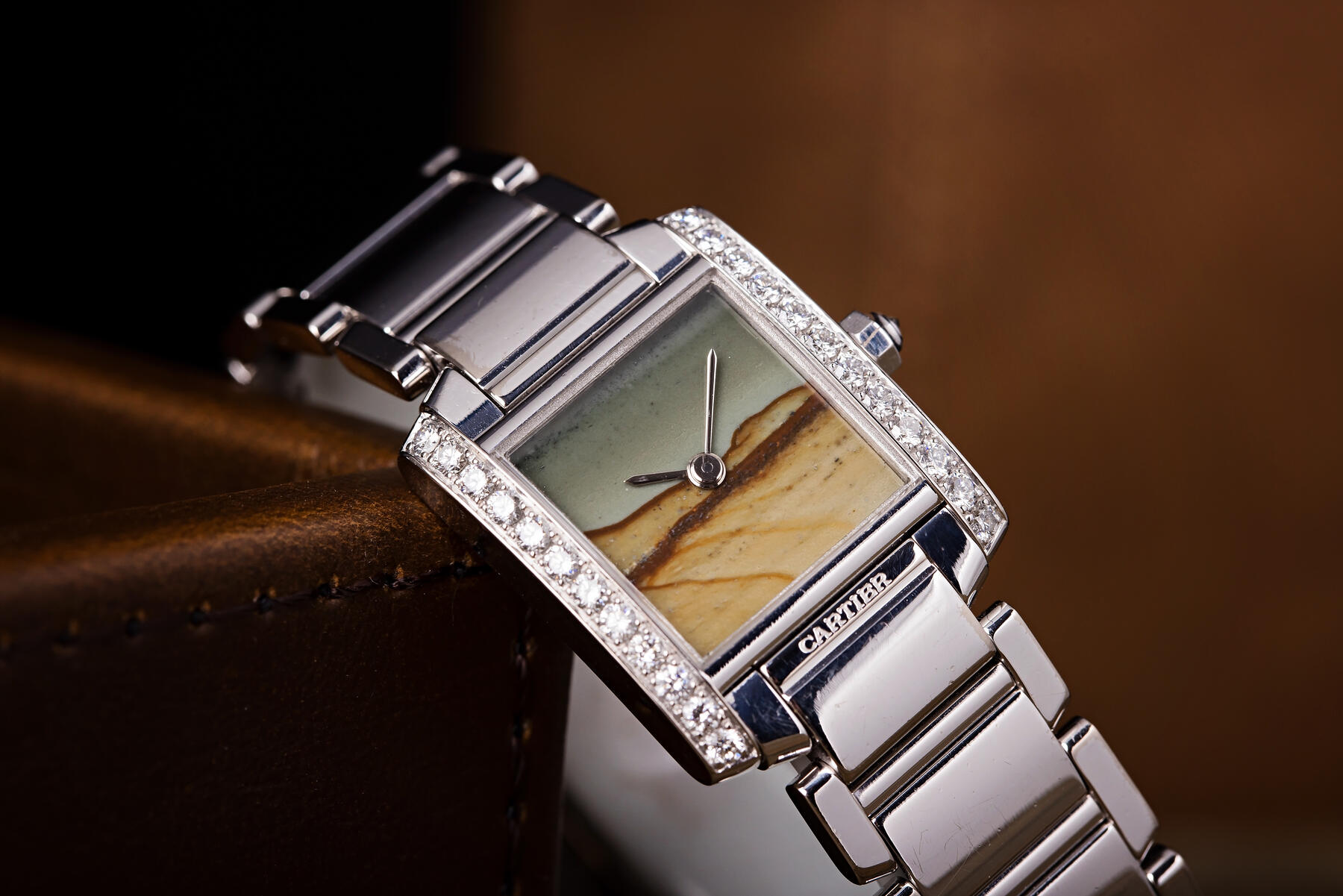
Throughout its history, the line has served as a canvas for creative experimentation, giving rise to a range of unique and captivating designs. From the unconventional Tank Savonette to the avant-garde Tank Asymétrique, these models showcase the companies willingness to push the boundaries of watchmaking and explore new forms of expression.
Tank Savonette, Tank Basculante, Tank à Guichets
The Tank Savonette, introduced in the 1920s, featured a unique cover that protected the dial when not in use, adding an element of intrigue and sophistication. This model showcased Cartier's ability to innovate and create watches that stood out from the crowd.
Similarly, the Tank Basculante, introduced in the 1930s, featured a reversible case that could be flipped over to protect the dial. This ingenious design not only added a layer of functionality to the watch but also showcased Cartier's technical prowess and creativity.
The Tank à Guichets, another creation from the 1930s, featured a unique dial with two apertures that displayed the hours and minutes. This unconventional design challenged traditional notions of timekeeping and showcased Cartier's willingness to experiment with new forms of expression.
The Tank Obus 1920s
The Tank Obus, introduced in the 1920s, was a daring and unconventional take on the classic model. This watch featured a unique, barrel-shaped case that was inspired by the artillery shells used in World War I.
The bold, masculine design captured the spirit of the Art Deco era and appealed to those who appreciated avant-garde style. Its unusual case shape and refined details made it a standout piece.
Tank Étanche & Tank Asymétrique 1930s
The 1930s saw the introduction of two more models: the Tank Étanche and the Tank Asymétrique. The Tank Étanche was the company's first water-resistant watch, featuring a screw-down case back and a specially designed crown that ensured the watch's resistance to moisture and dust.
The Tank Asymétrique, on the other hand, featured a case that was angled to one side, creating a bold and unconventional appearance. This model showcased Cartier's willingness to break from tradition and create watches that challenged the status quo.
These unique offerings serve as a testament to the brand's enduring creativity and innovation. From the Tank Savonette to the Tank Asymétrique, these models showcase the brand's ability to continually reinvent the collection, keeping it fresh and relevant for each new generation of watch enthusiasts.
The Tank's Evolution from the 1950s to the 1970s
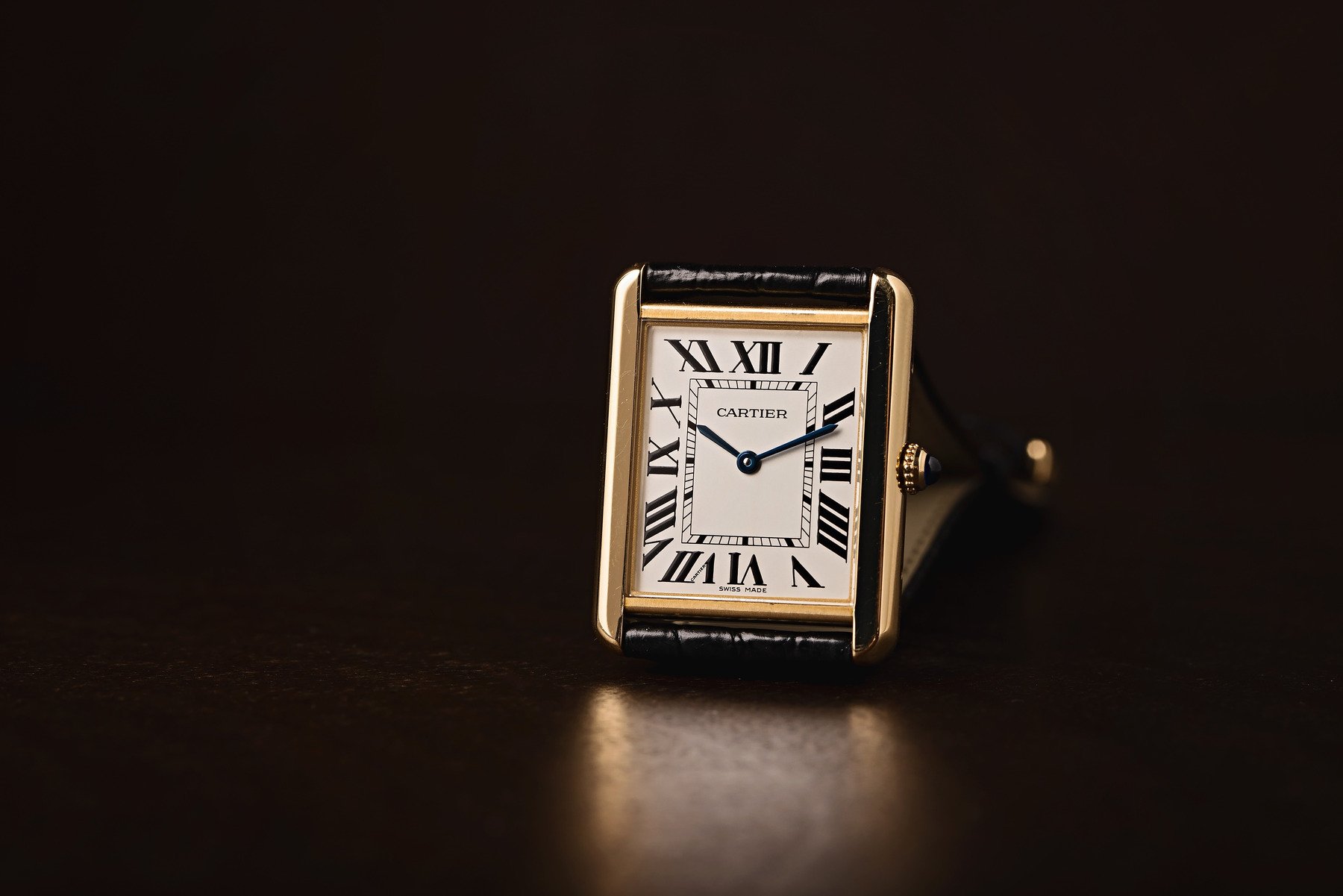
As the world moved into the post-war era, the line continued to evolve and adapt to changing tastes and trends. From the 1950s to the 1970s, the collection underwent a series of design updates and innovations that solidified its status as a true icon of luxury watchmaking.
The 1950s - 1960s
In the 1950s and 1960s, the timepiece experienced a resurgence in popularity, thanks in part to its association with a new generation of celebrities and style icons. The timeless look and understated elegance made it the perfect accessory for the sophisticated men and women of the era, who appreciated its refined aesthetics and impeccable craftsmanship.
During this period, Cartier introduced several new models, including the Tank Arrondie and the Tank Oblique. These timepieces featured subtle updates such as rounded brancards and angled dials, that kept the watch feeling fresh and modern without sacrificing its iconic character.
Tank Must de Cartier
In 1977, the brand introduced the Cartier Tank Must, a collection that would revolutionize the brand's approach to watchmaking. The Tank Must de Cartier was a more accessible version that featuring a gold-plated case and a quartz movement.
The introduction of the Tank Must de Cartier marked a significant shift in brand's strategy, as the brand sought to appeal to a wider audience of watch enthusiasts. The collection's success proved that the design could be adapted to suit a range of tastes and budgets.
The Cartier Tank Must also introduced a new level of customization to the collection, with a range of colorful dial options and interchangeable straps. This approach to personalization would become a hallmark in the years to come, allowing customers to create a watch that truly reflected their individual tastes.
As we explore the evolution from the 1950s to the 1970s, it becomes clear that this was a period of significant change and innovation for the iconic timepiece. From the subtle updates of the 1950s and 1960s to the revolutionary introduction of the Tank Must de Cartier, these decades saw the company adapt and evolve to suit the changing needs and tastes of watch enthusiasts around the world.
Modern Iterations of the Cartier Tank
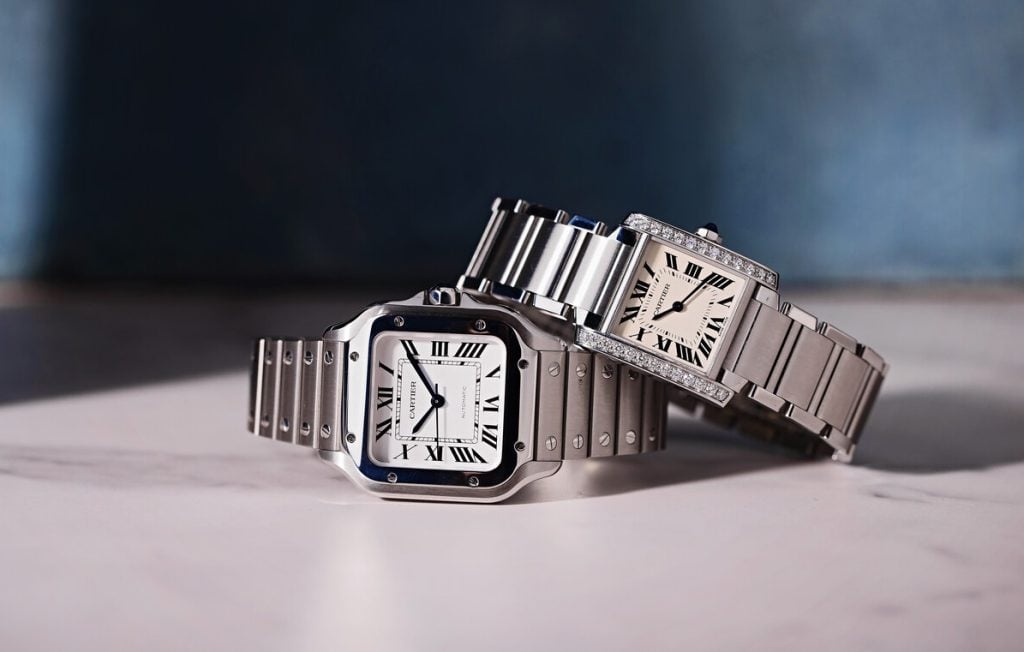
In the late 20th and early 21st centuries, Cartier continued to innovate and expand the collection, introducing a range of modern iterations that showcased the brand's commitment to both tradition and progress. From the Tank Américaine to the Tank Solo, these new models offered a fresh take on the iconic watch, while still staying true to its essential elegance and sophistication.
Tank Américaine
Introduced in 1989, the Cartier Tank Américaine was a bold and contemporary take. With its elongated case and curved profile, the Tank Américaine offered a modern reinterpretation of the Tank's signature elegance, perfectly suited to the style and tastes of the late 20th century.
This version quickly became a favorite among watch enthusiasts and collectors, who appreciated its striking design and impeccable craftsmanship. Available in a range of materials, including yellow gold, rose gold, and stainless steel to name a few.
Tank Française
The Tank Française, introduced in 1996, was another modern iteration. With its square case and integrated bracelet, the Cartier Tank Française offered a sleek and contemporary take on the company's signature elegance, perfectly suited to the minimalist aesthetics of the 1990s.
The integrated bracelet design was a significant departure from the traditional leather strap, offering a new level of functionality and durability. The watch's clean lines and simple, unadorned dial made it a versatile choice.
Tank Divan
Introduced in 2002, the Tank Divan was a playful and unconventional take. With its wide, rectangular case and offset dial, the watch challenged traditional notions of symmetry and balance. The design made it a standout in the collection, appealing to those who appreciated bold and unconventional style. Despite its departure from the traditional pieces offered, the Divan still managed to capture the essential elegance and sophistication the company is well known for.
Cartier Tank Anglaise
The Cartier Tank Anglaise was introduced in the early 2000s. With its curved case and integrated crown guard, the piece offered a modern reinterpretation best suited to the style and tastes of the new millennium.
The sleek and sophisticated design made it a favorite among watch enthusiasts and collectors, who appreciated an understated timepiece. Available in a range of materials, including rose gold and stainless steel, the collection offered a level of versatility and customization that appealed to a wide range of customers.
Tank Solo
Introduced in 2004, the Cartier Tank Solo was a simplified and streamlined version. With its clean lines and minimalist aesthetic, collectors enjoyed the contemporary take that is perfectly suited to the understated tastes of the early 21st century.
The streamlined design made it a versatile and practical choice for everyday wear, while still maintaining the qualities the model is known for. Its affordable price point and range of size options made it accessible to a wider audience of watch enthusiasts, helping to introduce a new generation of customers. As we explore the modern iterations it becomes clear that Cartier's commitment to innovation and progress has been essential to the brand's enduring success.
Cartier's Transition to In-House Movements and Recent Developments
In recent years, the brand has continued to push the boundaries of watchmaking, introducing new innovations and developments that showcase the brand's commitment to excellence and progress. One of the most significant changes came in 2005 when Cartier began transitioning to in-house movements across its entire collection.
2005 Transition to In-House Movements
Prior to 2005, Cartier had relied on third-party movement suppliers for many of its watches, including the Tank. However, in 2005, the brand made the decision to invest in Cartier's own movement manufacturing capabilities, with the goal of creating a range of high-quality, in-house calibers that would power its entire collection.
The transition to in-house movements was a significant milestone in Cartier's history, marking a new era of technical innovation and creative independence. By developing its own movements, Cartier was able to exercise greater control over the design and performance of its watches, ensuring that each timepiece met the brand's exacting standards of quality and craftsmanship.
The first in-house movement to be introduced in the collection was the Calibre 9452 MC, which debuted in 2005. This manual-winding movement was designed specifically for the watch, with a slim profile and a high level of finishing that perfectly complemented the watch's elegant design.
In the years since the transition to in-house movements, Cartier has continued to develop new and innovative calibers for the collection, including the Calibre 1904 MC and the Calibre 1847 MC. These movements offer a range of features and complications, including automatic winding, date displays, and power reserve indicators, that have helped to keep the Tank collection at the forefront of luxury watchmaking.
Tank MC
One of the most recent additions is the Tank MC, which was introduced in 2013. The bold new direction for this collection offered a larger case size and a more contemporary aesthetic. The model appeals to a new generation of watch enthusiasts, helping the model continue it’s surge in popularity.
The modern features include a sculpted, tonneau-shaped case that measures 34mm x 44mm, making it one of the largest models in the collection. The watch's dial is available in a range of colors and finishes, including silver, black, and skeleton versions that showcase the intricate workings of the movement.
Powering the watch is the Calibre 1904 MC, an in-house automatic movement that offers a power reserve of 48 hours and a water resistance rating of 30 meters. The movement is beautifully finished, with circular graining, and Côtes de Genève decoration on the bridges.
The line represents a significant step forward for the collection, showcasing Cartier's ability to evolve and adapt to changing tastes and preferences. While the watch's design may be a departure from the traditional model, it still offers many of the desirable elements collectors desire.
Whether through the development of new in-house movements or the introduction of bold new designs, Cartier will undoubtedly continue to push the boundaries of what is possible in luxury watchmaking, while still staying true to the timeless elegance and sophistication.
The Tank's Role in Shaping Modern Wristwatch Design

The brand’s influence on the world of watchmaking cannot be overstated. Since its introduction in 1917, the Tank has served as a template for countless other watches, inspiring generations of designers and setting the standard for what a dress watch should be.
One of the most significant ways they have shaped modern wristwatch design is through its unique case shape. The rectangular case was a radical departure from the round pocket watches that dominated the market at the time of its introduction. By designing a watch that was meant to be worn on the wrist, rather than carried in a pocket, Cartier helped to popularize the idea of the wristwatch as a fashionable and practical accessory.
The influence can be seen in countless other watches that have adopted its rectangular case shape, from the Jaeger-LeCoultre Reverso to the Patek Philippe Gondolo. These watches, and many others like them, owe a debt of gratitude to the Tank for pioneering the idea of the rectangular wristwatch and proving that it could be both elegant and functional.
Beyond its case shape, the collection has also had a profound influence on the overall aesthetic of dress watches. The simple, unadorned dial, with its Roman numeral hour markers and blued steel hands, has become a template for countless other dress watches over the years. The Tank's minimalist design has come to be synonymous with elegance and refinement, and has inspired countless other watches that have sought to capture its timeless appeal.
Perhaps most importantly, the watch has helped to shape the very idea of what a luxury watch should be. With its focus on design, craftsmanship, and attention to detail, the Tank has set the standard for what consumers expect from a high-end timepiece. Its enduring popularity and iconic status have made it a symbol of taste and sophistication, and have helped to cement Cartier's reputation as one of the world's premier luxury brands.
Iconic Figures Associated with the Cartier Tank
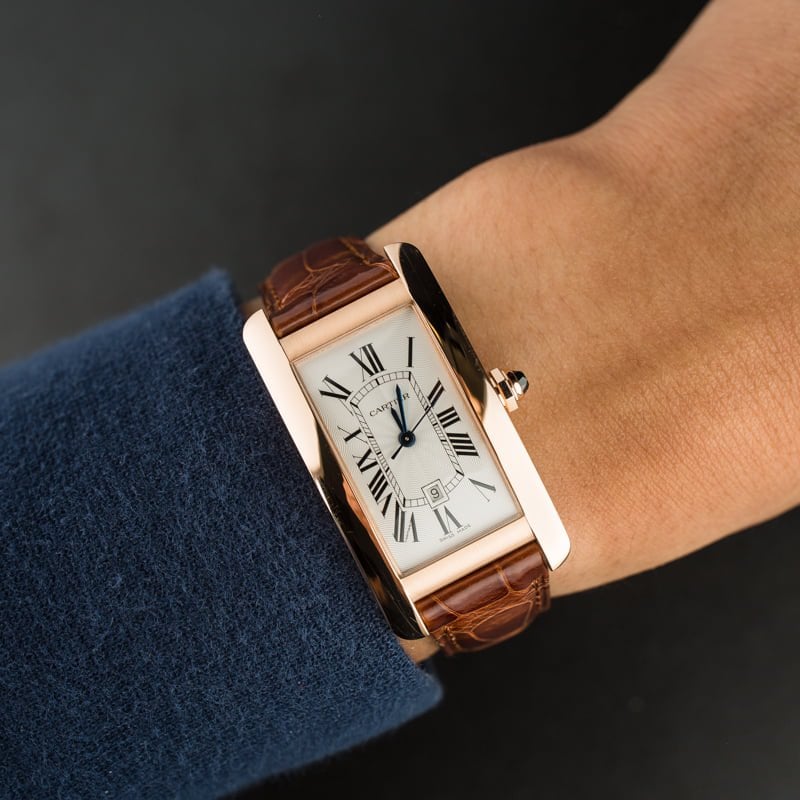
Throughout its history, the Cartier Tank has been worn by some of the most iconic figures of the 20th and 21st centuries. From Hollywood stars to political leaders, the model has been a favorite among those who appreciate its timeless elegance and understated sophistication.
One of the most famous wearers of the collection was the late Princess Diana, who was often seen wearing a Tank Louis Cartier. The Princess's association with the Tank helped to cement its status as a symbol of elegance and refinement, and made it a must-have accessory for a generation of fashion-conscious women.
Other notable wearers include Hollywood icons like Clark Gable, Gary Cooper, and Fred Astaire, all of whom appreciated the watch's classic style and versatile appeal. The line was also a favorite among artists and intellectuals, with figures like Andy Warhol, Truman Capote, and Yves Saint Laurent all known to have owned and worn the watch.
In the world of politics, the model has been worn by leaders like John F. Kennedy, who received a Tank as a gift from his wife, Jackie, on their fourth wedding anniversary. The watch has also been worn by many other world leaders, including French President Emmanuel Macron and the Dalai Lama.
The popularity among such a diverse range of iconic figures is a testament to its enduring appeal and timeless style. By transcending trends and fashions, the watch has become a true symbol of sophistication and success, and a must-have accessory for anyone who appreciates the finer things in life.
Conclusion
As we've seen throughout this exploration of the Cartier Tank's history, this iconic timepiece is much more than just a watch. It is a symbol of elegance, sophistication, and innovation that has captured the hearts and minds of generations of watch enthusiasts and fashion-conscious individuals.
From its origins during the First World War to its current status as a true icon of luxury watchmaking, the Tank has undergone countless evolutions and adaptations, while always staying true to its essential design principles. Whether in the form of the classic Tank Louis Cartier or the bold and modern Tank MC, the line has proven its enduring appeal and timeless style.
As we look to the future of the collection, it is clear that Cartier will continue to innovate and push the boundaries of what is possible in luxury watchmaking. With its commitment to craftsmanship, design, and technical excellence, Cartier is well-positioned to maintain the status as a true legend of the horological world.
For those who appreciate the finer things in life, the collection is a must-have accessory that combines style, sophistication, and history in one beautifully crafted package. Whether you are a seasoned collector or simply appreciate the art of watchmaking, there is no denying the enduring appeal of this iconic timepiece.
At Bob's Watches, we are proud to offer a carefully selected collection of pre-owned Cartier Tank watches, each with its own unique story and provenance. Whether you are looking for a classic vintage model or a modern iteration of this timeless design, we have the perfect Tank for you. Shop our Cartier Tank watches for sale now and add a piece of horological history to your collection today.
With over two decades of experience in the luxury watch industry, the Bob's Watches Editorial Team stands at the forefront of watch expertise and insight. Our team, composed of seasoned watch enthusiasts, skilled horologists, and knowledgeable industry insiders, is dedicated to bringing you the latest and most accurate information in the world of luxury timepieces. We pride ourselves on our meticulous attention to detail and our unwavering commitment to authenticity. Our editorial content is a reflection of our passion for luxury watches and our dedication to providing our readers with comprehensive, unbiased, and up-to-date information. Our expertise spans a wide range of topics, including in-depth reviews of the latest models, historical retrospectives of iconic timepieces, and insightful analyses of market trends. We are also renowned for our detailed guides on watch maintenance and investment advice, making us a trusted resource for both seasoned collectors and new enthusiasts alike. As thought leaders in the watch industry, we understand the importance of staying ahead of the curve. That's why we continually update our knowledge and skills, ensuring that our readers receive the most current and relevant information. Whether you're seeking advice on your next luxury watch purchase or looking to deepen your understanding of watch craftsmanship, the Bob's Watches Editorial Team is here to guide you.